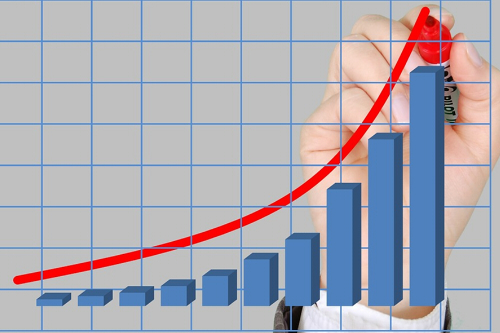Inflation Calculator Lets You See How Much Things Used to Cost Vs. Today
Ed Browne
As inflation reaches another multi-decade high in the U.S., inflation calculators can help people understand how much prices have increased over time.
According to figures released by the Labor Department on Tuesday this week, inflation in the United States has reached its highest point in more than 40 years.
The department’s monthly report on the Consumer Price Index states that inflation in the U.S. hit 8.5 percent for the 12 months that ended in March. The figure surpassed that of 7.9 percent in February, which itself was a four-decade high.
The rise could mean a squeeze for many ordinary people across the U.S. with increases in the prices of gasoline, shelter, and food being the largest contributors to the inflation rate rise.
What is inflation?
Inflation is defined as the rate of increase in prices over a given period of time, typically associated with the general cost of living. Inflation also relates to the loss of the value of a given currency, such as the dollar. A high period of inflation means a dollar would buy less than it would have done before that period.
The effect of inflation can be seen using an inflation calculator. These calculators allow users to input the cost of an item and then compare how much this would have cost in the past.
The calculator at USInflationCalculator.com uses the latest U.S. government CPI data, including the data published yesterday, to provide its results.
According to this calculator, an item like a loaf of bread costing $1.50 now would have cost $1.20 10 years ago, $0.94 20 years ago and $0.50 40 years ago.
One hundred years ago, in 1922, a $1 item today would have cost just $0.06.
With the historic rise, a $1 item just two years ago would now cost $1.11 – representing a rise of 11.1 percent.

What causes inflation?
There are a number of factors that can affect inflation. One is a monetary policy that allows a country’s supply of money to grow too big relative to its economy. The value of that money then decreases since there’s so much of it around.
This theory is known as the quantity theory of money and is one of the oldest hypotheses in economics according to the International Monetary Fund (IMF).
Another cause relates to the supply of goods and services if they are disrupted by, for example, a natural disaster, or if it becomes more expensive or difficult to supply them. High oil prices, for example, can increase the cost of production which may then be passed on to consumers.
Then there is what’s known as built-in inflation, in which prices rise because people expect them to rise. Workers expecting a rise in price in future will demand more wages to maintain their standards of living. As such, their higher wages mean that the cost of the product of their work also goes up. The cycle repeats itself.
Costas Milas, professor of finance at the University of Liverpool in the U.K., told Newsweek that supply factors are mostly behind the current U.S. inflation rate.
“Nevertheless, the higher inflation also has to do with the fact that the Fed and other central banks have arguably been slow to respond,” he said. Banks can raise interest rates in order to combat inflation.
“In general, when central banks raise interest rates as the Fed did in March, 2022, it takes between one and two years for higher interest rates to affect the economy,” Milas said. “So, a reasonable argument to make is that the Fed and other central banks should have acted much earlier.
“Central banks will counteract that, in 2021, they were in no rush to raise interest rates because the U.S. and global economies were coming out of the pandemic shock. In other words, Central Banks wanted to give the world economy a chance to grow before hiking interest rates.”
Is inflation bad?
It depends who’s asking. For some people, inflation is a good thing if they own certain assets which increase in value due to that inflation.
At the same time, inflation would not be good for the people they want to sell those assets to, since buyer will have to pay more money to get them.
As mentioned, inflation can drive up the costs of everyday items like food and energy for ordinary people. This can be counteracted if people demand higher wages to catch up to this price increase, but for those who cannot, it can mean a loss of purchasing power.
Governments may settle on an ideal level of inflation that encourages people to spend money to some extent rather than save it all to spend later.
On how to cope with the effects of inflation, Milas said people might “cut back on their spending, switch off heating for longer periods than usual and/or press for higher wages depending on their bargaining power.”
Central banks might worry that higher wages could lead to even higher inflation, Milas added, “but you cannot really blame individuals for trying to defend their spending power by asking for an increase in their wages that will catch up, to some extent, with rising prices!”








